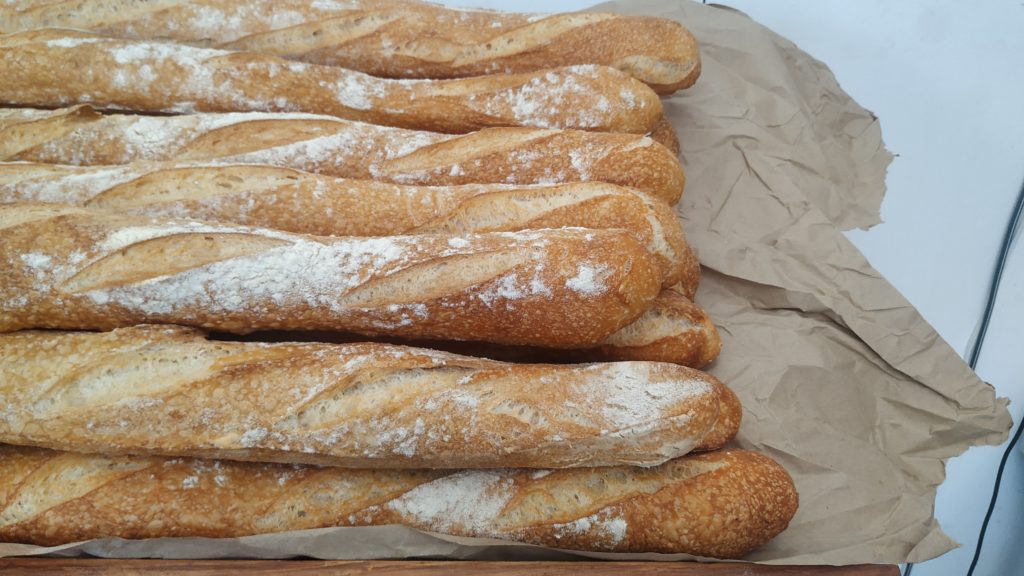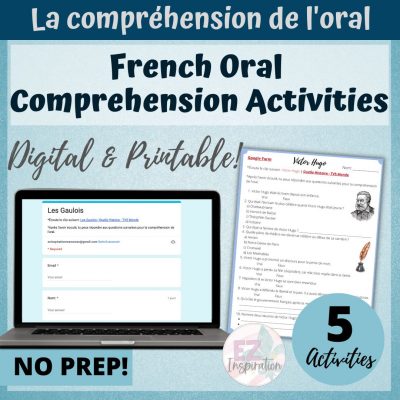
It’s important to note that French culture is an essential aspect of French language proficiency. French culture is diverse and unique and permits students to gain a greater understanding and appreciation for the French language. The study of French culture should be integrated into daily instruction rather than presented in an isolated fashion or on an occasional basis. With continuous exposure to French culture, students will increase their intercultural awareness and develop greater fluency and proficiency in the French language. Here are a couple of effective ways to teach French culture to your intermediate and senior students.
1. Introduce French Culture Through Art and Literature
One of the best ways to expose your students to French culture is through art and literature. French art and literature have a rich history and have contributed immensely to world culture. You can introduce your students to French authors and artists such as Claude Monet, Victor Hugo, Gustave Flaubert, and Pierre-Auguste Renoir. Here are a couple of ideas that you can use to incorporate French art and literature in your classroom :

Virtual museums: There are also many museum websites that you can use to virtually show your students famous French art and literature. These virtual “field trips” will keep your students engaged and help them develop an appreciation for French culture. Students can observe the artwork and literature up close and explore these works in detail. Some recommendations would be le Louvre, le Musée d’Orsay, les Invalides or le Musée National du Moyen Âge.
Read French literature: Explore some of France’s most famous literature works by reading some excerpts with the class and then discussing themes, characters and the literature writing style. You can also explore text to text connections with other English books they’ve read and draw text to world connections in the 21st century. Some literature excerpts could be from Victor Hugo’s Les Misérables or Gustave Flaubert’s Madame Bovary.

Offer choice: encourage students to find their own French inspired artwork or excerpt of literature. They can share their findings with the class and the importance of these masterpiece
2. Teach French History
French history has played a significant role in shaping French culture. Students can gain valuable insight into the culture, politics, and society of France by studying key events and periods in French history, such as the French Revolution, la Belle Époque, World War II, etc. Here are a couple of ideas that you can use to teach history in the French classroom :
Establish a timeline of important key events in French history. This will help students understand the context in which events occurred and how they are interconnected
Incorporate primary sources (ex. Diaries, letters, maps, artifacts, newspapers, photos) in your lessons when teaching about French history as much as possible. These sources will give students firsthand accounts of the events of the past. Students will be able to understand the perspectives of different people during key moments in French history and receive accurate and reliable information about the historical time period

Highlight important historical figures who have contributed to French history (ex. Napoléon Bonaparte, Louis XIV, Voltaire, Charles de Gaulle, etc.) Discuss their contributions to French history and their impact on French society
3. Explore French Cuisine
French cuisine is renowned around the world for its sophistication and elegance. French food is diverse and encompasses a wide range of regional specialties, including baguettes, croissants, cheeses, wines, and more. Teaching students about French cuisine can help them gain an understanding of French culture and the importance of food in French society. Some ideas for exploring French cuisine in your classroom could include :
Have your students participate in a cheese-tasting event where they try a variety of French cheeses and then rate them. The event can conclude by students voting for their favorite cheese. You can also give a brief description of each cheese, where it originates from, and some other interesting facts prior to the tasting.

Host a French Café with your students. Pick a variety of French specialties and students can listen to francophone music or watch a French movie during the cultural occurrence
Have students pick a French recipe to create at home and then record themselves making it. This creative task will allow students to practice reading in French and then practice their speaking skills by presenting their work with their classmates
Talk about health and nutrition by looking at the nutrition labels of some of the popular food choices in French culture. Students can learn about the importance of food in French culture, the emphasis on fresh and seasonal ingredients along with the moderation in portions

Compare and contrast French and North American specialties Students can evaluate the importance of health and nutrition in each of the cultures and share their findings
4. Teach About French Customs and Traditions
French customs and traditions play an important role in French culture. These customs and traditions are generally different from North American customs and traditions and allow your students to grow in intercultural awareness. Students can learn about the importance of Bastille Day, la fête du Travail, la fête de la Victoire, or explore why French people kiss each other on the cheek when greeting one another, have a different work-life balance than North Americans or different table manners. Students will be able to gain insight into the country’s culture and way of life, build cultural competency, and draw cultural comparisons.
One of my favorite ways to teach about French customs and traditions is by showing students famous Francophone Youtubeurs or TikTokers that they can connect with. Some of my favorites include:
Loïc Suberville
Encore French Lessons
AT Frenchies
Cyprien
Easy French
Comme une Française
Paul Taylor
Denyzee
**Remember to always pre-watch anything that you show your students in order to make sure that it is appropriate for their age level**

5. Use Multimedia Resources
The Internet has an abundant amount of multimedia resources available for all teachers. You can find many useful educational aids such as videos, podcasts, virtual field trips, and interactive online tools to help teach French culture. Using multimedia resources helps students develop a deeper understanding of French culture and allows them to connect with technology in a fun and interactive way. Multimedia resources will bring French history to life for them and keep them engaged.
Final Remarks & Recommendations for French Culture Resources
In conclusion, teaching French culture is an essential aspect of French language education. French culture and language are closely intertwined and by exploring French culture in your classroom, you will be able to enhance your students’ language learning and encourage an appreciation for diversity in global societies.
If you need a starting point for introducing French Culture into your French classroom, here are a few of my favorite resources to use in the classroom :

Discover iconic French Historical Figures throughout history who helped shape France’s culture and heritage.

Explore Francophone holidays and festivals (mainly from France) and learn about their exciting traditions.

Oral comprehension activities & assessments that focus on 5 different francophones & their contributions.

Learn about different customs, cultural practices & traditions in France, North America & Morocco.
Bonne semaine de la francophonie,
Emily 🤍🤍
